Threatened by a catholic Spain and conquered by the Turks
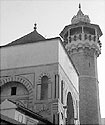
Regrettably, this big reign finished in a panic: plundered in 1534 by the troops of Khereddine Barberousse, plundered in 1535 by Charles the Fifth then again, forty years later, by Ferdinand, it knew then the darkest days of its history.
Saved by the Turkish General Sinan Pacha in 1574, it will put at least half a century to reconstruct its districts completely shaved by the Spanish occupant, to restore its monuments, to reorganize the education of Zitouna and to reactivate its industry and its business.
It is to this tiring task that dedicated themselves the first Pashas and Deys, appointed by the sultans of Istanbul to steer, helped there by a very reserved and cosmopolitan population: Tunisians of old origin, Ottoman freshly off-loaded and Moriscos-andalous expelled by Philippe in 1609 and welcomed by Youssef Dey.
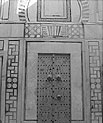
And Othman Dey, but also renegades of Mediterranean and European origins several districts made new skin, is to welcome the Spanish hosts (street of the Andalusians in Bab Menara's district, houmet Andalusian al near the place(square) Halfaouine, the Biga " Vega " except Bab Carthagenna), Either to accommodate the Turkish people in the power and their servants as in the district of the street of the Pasha and Bab Bénat found completely in ruins, or to collect the more and more numerous Europeans in the district close to the port.
So that Tunis of the XVIle century seemed to start again so much or little its dynamism of former days: new and spacious souks made their appearance as that of Bchamqiya (manufacturers of slippers in the Turkish way) or that of the al birka (of the sale of the black slaves), the souk of chéchias ( red hats); mosques: those built by Youssef Dey or by Hamouda pasha.
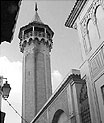
Or by Mohamed Bey (more known by mosque of sidi Mehrez) remarkable by its domes reminding the Ottoman mosques of Istanbul; palaces as beylical palace of Kasbah which(who) will be later enlarged by the bey Hamouda pasha, Dar Othmane, Dar Haddad, a midha (at present moved in the Belvedere) was placed in the souk at-Truk side of the Mrabet pub, a "maristan" hospital in the al-Azzafine street and many others: Mausoleums as that of Mouradites (street Sidi Ben Arous) and several works in the public interest such as fountains drinking troughs, kouttabs …
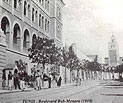
In spite of the storm and the reconstruction which followed it), Tunis seemed to have kept in the xv e century the ancient urban order characterized by the centrality of the mosque and the souks, the dominance North-south and east-west main trunk roads cutting itself at the level of souks, ramparts protecting the central medina and the others, the suburbs, a functional segregation between public place and private space, the hierarchy of ways..
In brief, all the characters which we can find from the morphological analysis of the urban tissue today. As nowadays, the narrow streets sheltered behind studded doors, rich houses, large impressive houses and modest houses. No outside sign of distinction except for the door and of some windows.
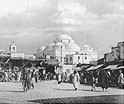
Everything is inside: more or less rich and numerous hallways according to the rank and the wealth of the owner, the central court with patio surrounded with two, three or four porticoes and with rooms in kbu and to mqasir (room in T with iwan in the center, two small bedrooms on the sides and two alcoves with the side ends), floor coverings out of marble or kadhel, earthenware with the bottom of the walls and stucco in top or covering the ceilings in vaults or cupola in the absence of ceilings out of wooden with beams or boxes…
Nothing seemed to have changed compared to the previous time. And yet, many new aspects made their appearance especially in the decoration: vegetable reasons such as cypresses, vases flowered substitute or being next to the old reasons geometrical or derived from the flora, capitals with volutes instead of the famous capitals known as “hafsides” which one however continued to make until the 19th century…